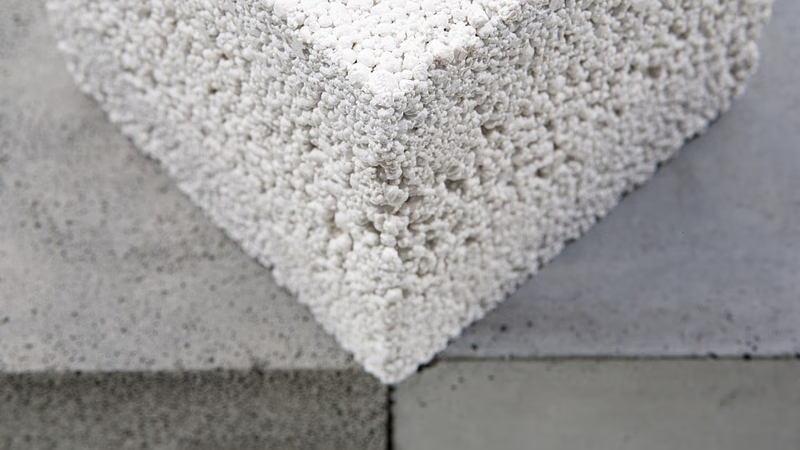
Concrete blocks adhering to international trade standards.
Some countries may require specific standards and technical approvals for concrete blocks. If your concrete blocks do not conform to certain standards and regulations, there may be restrictions on exporting to that country. Some countries require specific export permits and licenses to ship concrete blocks. These licenses may include commercial, financial, health or other licenses. Before any export, you should consult with the Ministry of Foreign Affairs, Ministry of Commerce or relevant organizations in the country of origin and destination to understand the export requirements and regulations. Each country may set specific import tariffs for concrete blocks. These tariffs may be calculated based on weight, value or other unit. Also, the customs may set import restrictions such as import quantity ceiling or only allow some countries to import concrete blocks.
In some cases, countries may be embargoed and the export of concrete blocks to them is prohibited. These sanctions may be imposed for political, economic or security reasons. The World Trade Organization, also known as the WTO, is an international organization responsible for regulating international trade. This organization sets laws such as anti-dumping laws and laws related to international trade. International contracts and agreements such as the International Sale of Goods (CISG) and other international agreements play an important role in exporting. These laws and agreements can regulate the rules related to contracts of purchase and sale, transportation and insurance.
- ASTM C90: Standard Specification for Concrete Blocks in America.
- ASTM C1262: American Standard Specification for Lightweight Concrete Blocks.
- ACI 318: Reinforced concrete design standard in America.
- EN 771-3: Standard for concrete blocks in Europe.
- EN 206: Reinforced concrete standard in Europe.
- Eurocode 2: reinforced concrete design standard in Europe.
- AS 4455: Standard for Concrete Blocks in Australia.
- AS 3600: Australian reinforced concrete design standard.
- IS 2185: Standard for Concrete Blocks in India.
- IS 456: Design standard for reinforced concrete in India.
- GB 11968: Standard for concrete blocks in China.
- GB 50010: Reinforced concrete design standard in China.
Each country has its own laws and regulations in the field of export and import. These laws may include things like licenses, tariffs, export restrictions, health and technical regulations, and more. To export concrete blocks, you should check the export laws and regulations in the country of origin and destination. In some cases, standards and technical approvals may be required to enter certain markets. To export concrete blocks, you need to make sure that your product is compatible with valid standards and regulations in the destination country. Some countries may require specific standards and technical approvals for concrete blocks. If your concrete blocks do not conform to certain standards and regulations, there may be restrictions on exporting to that country.
Some countries require specific export permits and licenses to ship concrete blocks. These licenses may include commercial, financial, health or other licenses. Before any export, you should consult with the Ministry of Foreign Affairs, Ministry of Commerce or relevant organizations in the country of origin and destination to understand the export requirements and regulations. Each country may set specific import tariffs for concrete blocks. These tariffs may be calculated based on weight, value or other unit. Also, the customs may set import restrictions such as import quantity ceiling or only allow some countries to import concrete blocks. In some cases, countries may be embargoed and the export of concrete blocks to them is prohibited. These sanctions may be imposed for political, economic or security reasons.
-

Identifying target markets is crucial for the marketing and export of lightweight sponge concrete blocks. This involves analyzing both domestic and foreign markets, understanding customer needs, competitor landscape, pricing, regulations, and product features. A comprehensive marketing strategy should be developed based on this analysis, focusing on export destinations, competitive advantages, pricing strategies, distribution channels, and promotional tactics. Effective advertising methods include media campaigns, exhibitions, CRM techniques, and internet marketing. Establishing a communication network with customers and partners is essential for success. Branding plays a significant role in differentiating products; it involves creating a strong brand identity through naming, logo design, messaging, and customer experience. Challenges in exporting concrete blocks include high transportation costs due to their weight and volume, customs clearance delays, and compliance with destination country standards. Familiarity with technical regulations is necessary to ensure product compliance.
Payment issues across borders can also arise. Utilizing online resources for market insights and consulting local experts can aid in overcoming these challenges. Building relationships with local distributors and sales representatives is vital for establishing a sustainable supply chain that enhances sales potential. Overall success in exporting lightweight concrete blocks requires adaptability to market conditions and collaboration with consultants or local representatives.
-

Exporting concrete blocks requires adherence to specific international standards and regulations that vary by country. Compliance with these standards is crucial, as non-conformity can lead to export restrictions. Countries may mandate various export permits, including commercial and health licenses, which necessitate consultation with relevant authorities such as the Ministry of Foreign Affairs or Ministry of Commerce. Import tariffs for concrete blocks are also determined by each country, often based on weight or value, and may include restrictions on import quantities or specific countries allowed to import. Additionally, political or economic sanctions can prohibit exports to certain nations. The World Trade Organization (WTO) plays a significant role in regulating international trade laws, including anti-dumping measures and agreements like the International Sale of Goods (CISG). Understanding these regulations is essential for successful trade in concrete blocks across different regions.
-

The export value of AAC and ACB light concrete blocks is influenced by production costs, demand, and destination market characteristics. Countries with low production costs due to cheap raw materials or advanced technology can find exporting advantageous. High demand in destination markets, such as China and India, driven by urbanization and infrastructure needs, further enhances export potential. Economic factors like domestic production costs, inflation rates, and transportation expenses also play a crucial role in import decisions. Additionally, varying regulations and standards across countries can affect the import-export dynamics of lightweight concrete blocks. Major markets include the United States, Brazil, Russia, and several developed nations where construction needs are significant. The unique properties of AAC and ACB blocks—such as thermal insulation and fire resistance—make them appealing for construction projects. Countries lacking the necessary technology or raw materials may rely on imports to meet their construction demands. Overall, understanding these trade dynamics is essential for businesses engaged in the B2B marketplace across Asia and the Middle East.
-

The lightweight concrete blocks market is shaped by various factors including product innovations, regulatory standards, and economic conditions. Key insights reveal that aerated concrete blocks, known for their thermal and sound insulation properties, are produced by incorporating air bubbles into the cement mixture. This results in a lightweight structure that enhances transportation and installation efficiency. The market is influenced by construction industry growth, technological advancements, and competition analysis. Understanding competitors" strategies and market share is crucial for businesses aiming to thrive in this sector. Additionally, the demand for lightweight concrete blocks spans residential and commercial applications, particularly in earthquake-resistant buildings. Conducting thorough market research through reports, industry publications, and networking at relevant events can provide valuable insights into current trends and competitor dynamics. Overall, staying informed about market conditions and customer needs is essential for success in the lightweight concrete block industry. "




